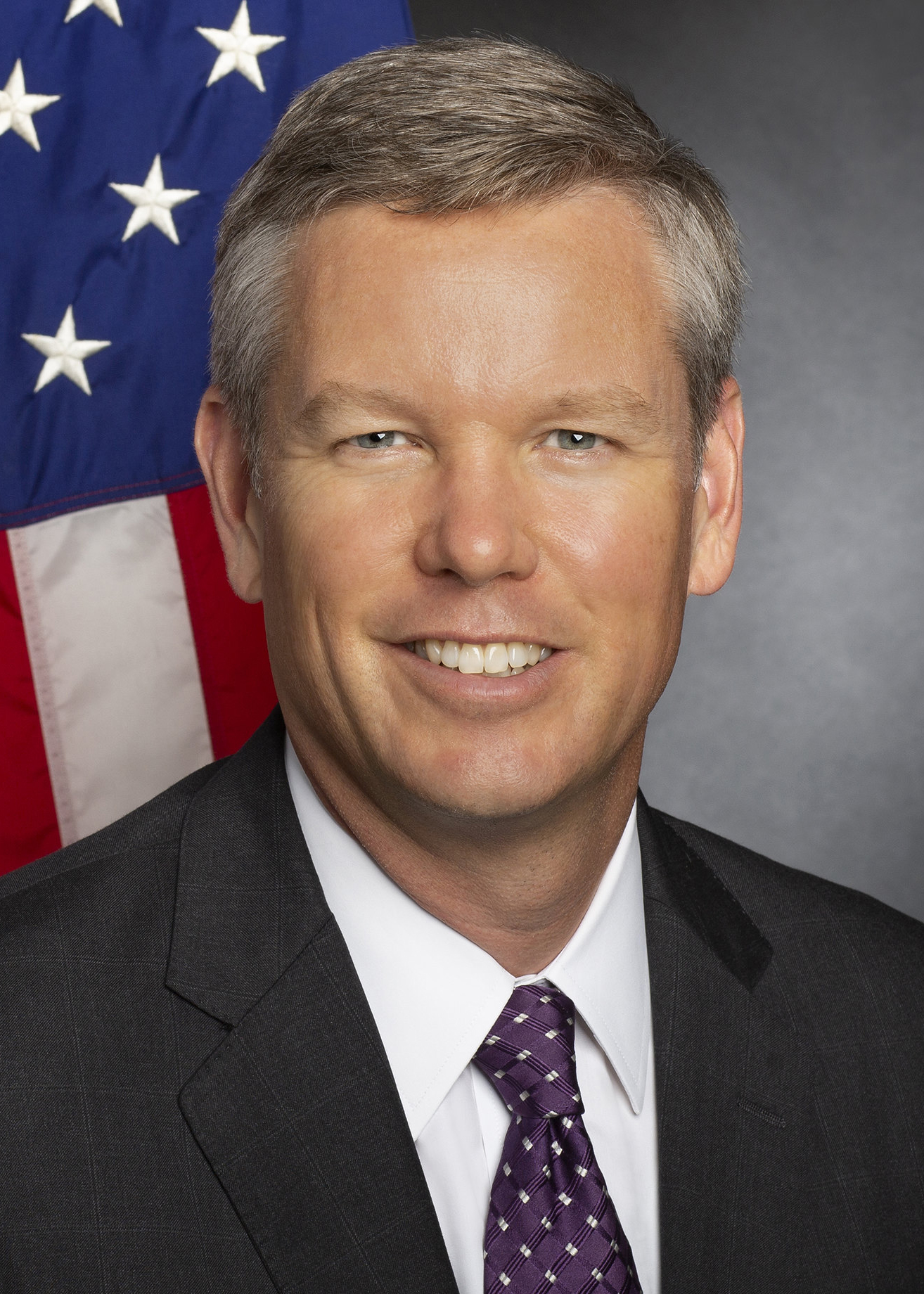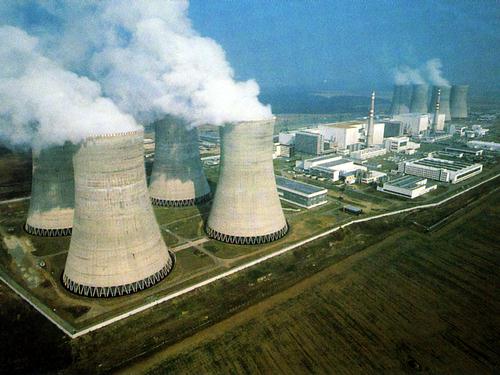Constellation completes ownership stake in Texas plant

Constellation Energy announced last week that it has completed its acquisition of NRG Energy’s 44 percent ownership stake in the South Texas Project nuclear power plant.
Published since 1959, Nuclear News is recognized worldwide as the flagship trade publication for the nuclear community. News reports cover plant operations, maintenance and security; policy and legislation; international developments; waste management and fuel; and business and contract award news.

A message from General Atomics
Advanced Nuclear Fuel Cladding: Innovative Materials Enhance Fleet Safety and Performance

Constellation Energy announced last week that it has completed its acquisition of NRG Energy’s 44 percent ownership stake in the South Texas Project nuclear power plant.

Hanson
The U.S. Nuclear Regulatory Commission is in a difficult position. The commission must manage competing pressures from those who think it overburdens the nuclear industry and needs to move more quickly to respond to the changing regulatory landscape, and from those who think it is too cozy with the industry it’s tasked with regulating. This is a common theme all regulators face, and was one theme of the discussion with the NRC chair, Christopher Hanson.
Hanson was designated chair of the NRC in January 2021 by President Joe Biden and has since wrestled with this dilemma as the person responsible for conducting the administrative, organizational, long-range planning, and budgetary functions of the agency.
Candidates have been nominated for the 2024 American Nuclear Society national election. Terms will begin in June 2024, following the Annual Meeting. The six national positions open are vice president/president-elect and five seats on the Board of Directors—four U.S. members at-large and one Young Member. Ballots will be sent electronically on Tuesday, February 20, 2024, and must be submitted by 1:00 p.m. (EDT) on Tuesday, April 9, 2024.

X-energy, the Rockville, Md.–based small modular reactor/nuclear fuel developer, and Ares Acquisition Corporation (AAC), a publicly traded special-purpose acquisition company, have agreed to terminate their business combination agreement, effective immediately, the companies announced this week.

Through a collaborative effort between the Department of Energy’s Office of Environmental Management and the state of Ohio, a drone outfitted with radiation detectors underwent testing recently at the site of the Portsmouth Gaseous Diffusion Plant for potential future use.

Elektrárna Dukovany II (EDU II), a subsidiary of Czech utility ČEZ, has received final bids for the construction of a fifth reactor at the Dukovany plant, as well as nonbinding bids for three additional units to be sited at Dukovany and at Temelín, the Czech Republic’s other nuclear power facility. (Dukovany currently houses four Russian VVER-440/V213 pressurized water reactors, while Temelín is home to two VVER-1000/V320s.)

Safford
The Nuclear Regulatory Commission has announced that Carrie M. Safford will be the new secretary of the commission, effective November 5. She is the fifth person in the 48-year history of the NRC to hold the position.
Safford has been serving as deputy director in the Division of Fuel Management, which has regulatory responsibility for nuclear fuel cycle activities in the Office of Nuclear Material Safety and Safeguards.
“Carrie has served in a variety of capacities and brings extensive legal and regulatory experience,” said NRC chair Christopher T. Hanson. “Her proven executive leadership and vast knowledge of the agency’s policies and procedures well positions her to keep the Commission’s business functioning smoothly.”
Bruce Power, operator of Ontario’s eight-unit Bruce nuclear plant, has notified Canadian regulators of its intent to launch an impact assessment (IA) for Bruce C—the company’s name for potential new nuclear generation at the site.
With a new speaker finally seated, the GOP-led House of Representatives recently passed the fiscal year 2024 Energy and Water Development and Related Agencies Appropriations Act (H.R. 4394) in a near–party line vote of 210–199. A lone Republican—Rep. Ken Buck of Colorado—opposed the measure, as did all voting Democrats.

Zeno Power, a developer of commercial radioisotope power systems (RPSs), announced on October 26 that it has completed the design, fabrication, and testing of its Z1 strontium-90 heat source. According to Zeno, they have tested the first commercially developed radioisotope heat source and reached a key milestone for Zeno to begin delivering RPSs to customers in 2025.

At a legislative markup session last week, a House Energy and Commerce subcommittee approved 17 energy bills for consideration by the full E&C committee, including 12 measures to boost and streamline the deployment of nuclear power. The nuclear-related bills cleared the subcommittee by voice vote with bipartisan support.
“Our shared goal in this committee is to advance bipartisan, durable policy that will expand nuclear energy and its benefits for the nation,” said Rep. Jeff Duncan (R., S.C.), chair of the E&C’s Energy, Climate, and Grid Security Subcommittee, in his opening remarks on October 24. “Chair Rodgers, ranking members Pallone and DeGette, and I sent a bipartisan request for information to a variety of stakeholders this past April. Based on feedback from this request and the hearings we’ve had since, it’s clear that more can be done to modernize the Nuclear Regulatory Commission and Department of Energy to advance nuclear energy in this country.”

Doug Barber
Xcel Energy was the first utility to commit to carbon-free operations by 2050, with an 80 percent reduction by 2030. To achieve this important goal, we recognized that we would have to think and act in innovative ways. This mindset is highlighted in our approach to plant maintenance. In 2019, Xcel created a unique unified learning organization. This approach has leveraged nuclear and nonnuclear expertise and training resources to improve craft skills, address long-term equipment reliability vulnerabilities, implement strategic initiatives, and improve sharing of resources—all of which has improved plant performance.
Xcel Energy’s unique approach has been proven successful in back-to-back Institute of Nuclear Power Operations Maintenance and Technical Training renewals at each of its plants with strengths directly attributed to our unified enterprise and nuclear learning approach, which ensures a focus on nuclear excellence, technician effectiveness, and business efficiency.

X-energy and the Department of Energy’s Office of Nuclear Energy have reached a cooperative agreement valued at $2.5 million to continue the development of X-energy’s mobile microreactor design, the company announced October 25. The agreement, which extends through 2024, supports X-energy’s work on architecture and key technologies for the preliminary design of a commercial transportable power plant expected to produce 3–5 MWe.

The initial loading of nuclear fuel into the Kakrapar-4 reactor core has begun, the Nuclear Power Corporation of India Ltd. has announced. Permission for fuel load was granted by India’s Atomic Energy Regulatory Board “after carrying out stringent safety and security reviews,” according to the NPCIL.
.jpg)
To help speed up commercialization of its eVinci microreactor, Westinghouse Electric Company this week launched a new design and manufacturing facility for the project near downtown Pittsburgh, Pa. Located in the borough of Etna, the 87,000-square-foot eVinci “accelerator hub” will be home to engineering and licensing operations, testing, prototype trials, business development, and sales, Westinghouse said in an October 24 announcement, adding that the facility will include manufacturing space for producing the “innovative heat pipes that are central to the eVinci technology.”

Explosions near the Khmelnytskyi nuclear power plant in western Ukraine early Wednesday shattered windows at the facility and temporarily cut off power to some off-site radiation monitoring stations, the International Atomic Energy Agency reported on October 25.

Just a few hours after a new Speaker of the House of Representatives was elected on October 25, the White House sent a list of funding priorities for “critical domestic needs” to Congress for consideration as legislators restart the stalled annual appropriations process. Those priorities include $2.2 billion for low-enriched uranium (LEU) and high-assay low-enriched uranium (HALEU) enrichment capabilities. And to ensure that investment in domestic HALEU enrichment pays off, the White House is also calling for a long-term ban on enriched uranium from Russia.
![]() Here is a recap of industry happenings over the past month:
Here is a recap of industry happenings over the past month:
TerraPower signs contracts to advance Natrium
TerraPower and Centrus Energy have signed a memorandum of understanding to expand their collaboration in the development of commercial-scale production of high-assay low-enriched uranium (HALEU) to fuel TerraPower’s Natrium sodium-cooled fast reactor, which is designed with a molten salt–based energy storage system. TerraPower is planning its Natrium demonstration project for a site in Kemmerer, Wyo., with a target operational date of 2030. Centrus plans to produce as much as 20 kilograms of fuel by the end of 2023 at its production facility in Piketon, Ohio, and to further scale up production with additional centrifugal cascades.

The Department of Energy’s National Reactor Innovation Center (NRIC) awarded $3.9 million to three advanced nuclear energy developers on October 23 to design experiments to test microreactor designs in the Demonstration of Microreactor Experiments (DOME) test bed at Idaho National Laboratory.
The Department of Energy has awarded a new small business contract to Inomedic Health Applications, Inc. (IHA) to provide continued occupational medical services to Hanford Site employees. According to the DOE, IHA is a small, disadvantaged, woman-owned business located in Hampton, Va.